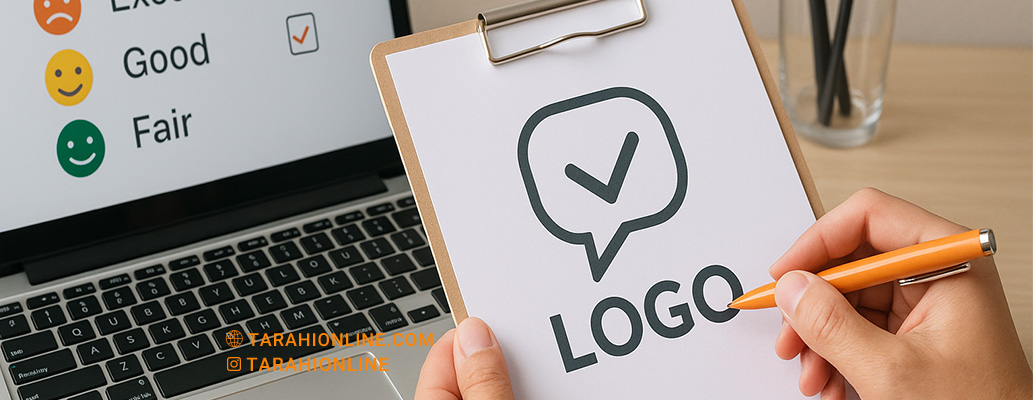
A logo, as a cornerstone of a brand’s visual identity, must not only align with the brand’s values and personality but also resonate effectively with its target audience. Audience feedback serves as a valuable tool in the logo design process, helping designers create logos that are impactful, memorable, and relevant to the audience’s needs. But how can audience feedback be used effectively in logo design? This article explores the key steps and strategies for leveraging audience feedback to craft a successful logo.
1. Identifying the Target Audience
Before collecting feedback, it’s essential to clearly identify the brand’s target audience. This involves understanding their age group, gender, interests, cultural background, and behaviors. Knowing who the logo is designed for helps designers gather relevant and meaningful feedback from the right groups.
For example, if the brand targets young people, feedback from this demographic will be more valuable than from other groups. A precise understanding of the audience lays the foundation for targeted feedback collection.
2. Gathering Feedback in Early Stages
Feedback should be collected from the earliest stages of design, such as during ideation and initial sketches. This allows designers to establish the right direction before finalizing the logo. Methods for gathering early feedback include:
-
Focus Groups: Inviting a small group of target audience members to discuss initial ideas and sketches.
-
Online Surveys: Using tools like Google Forms or SurveyMonkey to collect opinions on preliminary logo concepts.
-
Individual Interviews: Conducting one-on-one conversations with audience representatives to gain deeper insights into their preferences and expectations.
For instance, a fashion brand might ask a focus group to review initial logo designs and comment on which ones best convey luxury or creativity.
3. Presenting Multiple Options for Feedback
To obtain effective feedback, it’s helpful to present several initial designs (typically 2–4 options) to the audience. This allows them to compare and articulate their preferences. When presenting designs:
-
Provide Context: Explain the brand’s purpose and the message the logo should convey.
-
Ask Targeted Questions: Instead of asking “Do you like this logo?”, pose questions like “What emotions does this logo evoke?” or “Does this design align with the brand’s values?”
-
Offer Variety: Present designs with different styles (e.g., minimalist, classic, or bold) to capture a broad range of feedback.
4. Analyzing Feedback Qualitatively and Quantitatively
Once feedback is collected, it must be carefully analyzed. This involves reviewing both quantitative data (e.g., survey results) and qualitative input (e.g., verbal or written comments). Key considerations for analysis:
-
Identify Patterns: Do most respondents prefer a specific style, color, or element?
-
Focus on Constructive Criticism: Negative feedback can highlight weaknesses, such as poor legibility or lack of brand alignment.
-
Filter Irrelevant Opinions: Some feedback may be personal or unrelated to the brand’s goals and should be considered cautiously.
For example, if audiences find a logo too cluttered, the designer might shift toward a more minimalist approach.

5. Incorporating Feedback into the Redesign Process
Feedback should guide improvements without dictating the entire design process. Professional designers blend audience input with the brand’s goals and design principles to make informed revisions. This includes:
-
Refining Specific Elements: Adjusting colors, fonts, or icons based on feedback.
-
Preserving Brand Identity: Ensuring changes do not compromise the brand’s core values or identity.
-
Testing Revised Designs: Presenting updated versions to the audience for final validation.
For instance, if audiences perceive an initial logo as too formal, the designer might experiment with a friendlier font or warmer colors.
6. Testing the Logo in Real-World Contexts
After incorporating feedback and refining the design, the logo should be tested in real-world applications to evaluate its impact on the audience. This involves:
-
Various Applications: Displaying the logo on business cards, websites, packaging, or social media.
-
Final Feedback: Gathering opinions on the logo’s performance in these contexts.
-
Visual Consistency: Checking whether the logo remains legible and appealing across different sizes and media.
For example, a logo may look great on a digital screen but lose clarity in monochrome printing. Feedback at this stage can help address such issues.
7. Balancing Feedback with Design Creativity
While audience feedback is valuable, designers should not let it fully dictate the creative process. Some audience preferences may be personal or misaligned with the brand’s objectives. Designers must:
-
Strike a Balance: Combine feedback with their professional design expertise.
-
Stay True to the Brand: Ensure the logo primarily reflects the brand’s identity and values.
-
Use Feedback as Inspiration: Leverage feedback to enhance creative ideas rather than following it blindly.
Practical Tips for Using Audience Feedback
To effectively incorporate audience feedback into logo design, consider these tips:
-
Choose the Right Audience: Feedback from representatives of the target audience is more valuable.
-
Ask Specific Questions: Design questions that elicit precise, actionable feedback.
-
Use Digital Tools: Platforms like Typeform or Instagram Polls can streamline feedback collection.
-
Document Feedback: Record responses systematically to simplify analysis.
-
Iterate with Multiple Feedback Rounds: Collect feedback at different stages (ideation, initial designs, and final designs).
Using audience feedback in logo design is a strategic process that leads to creating logos that are relevant, engaging, and effective. By identifying the target audience, gathering feedback early, presenting multiple options, analyzing responses carefully, incorporating changes thoughtfully, and testing the logo in real-world contexts, designers can craft a logo that resonates deeply with both the brand and its audience. By balancing feedback with creative expertise, designers can ensure the final logo not only meets audience expectations but also powerfully represents the brand’s unique identity.
The Tarahi Online graphic and logo design team, with over ten years of experience in professional graphic and logo design, is ready to assist you and bring your ideas to life. Contact us to submit your request or place an order.
